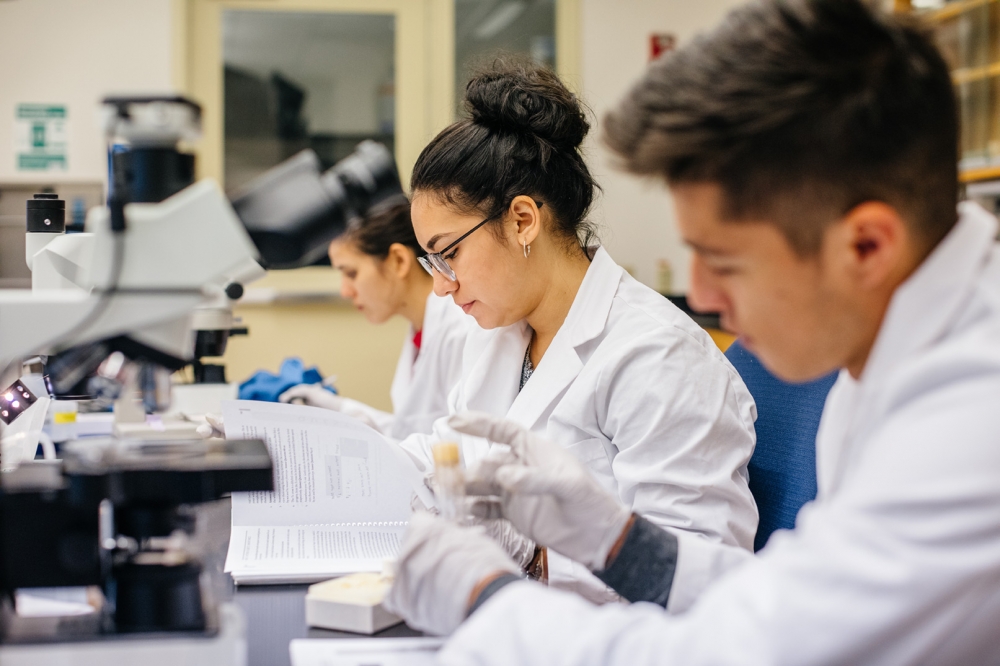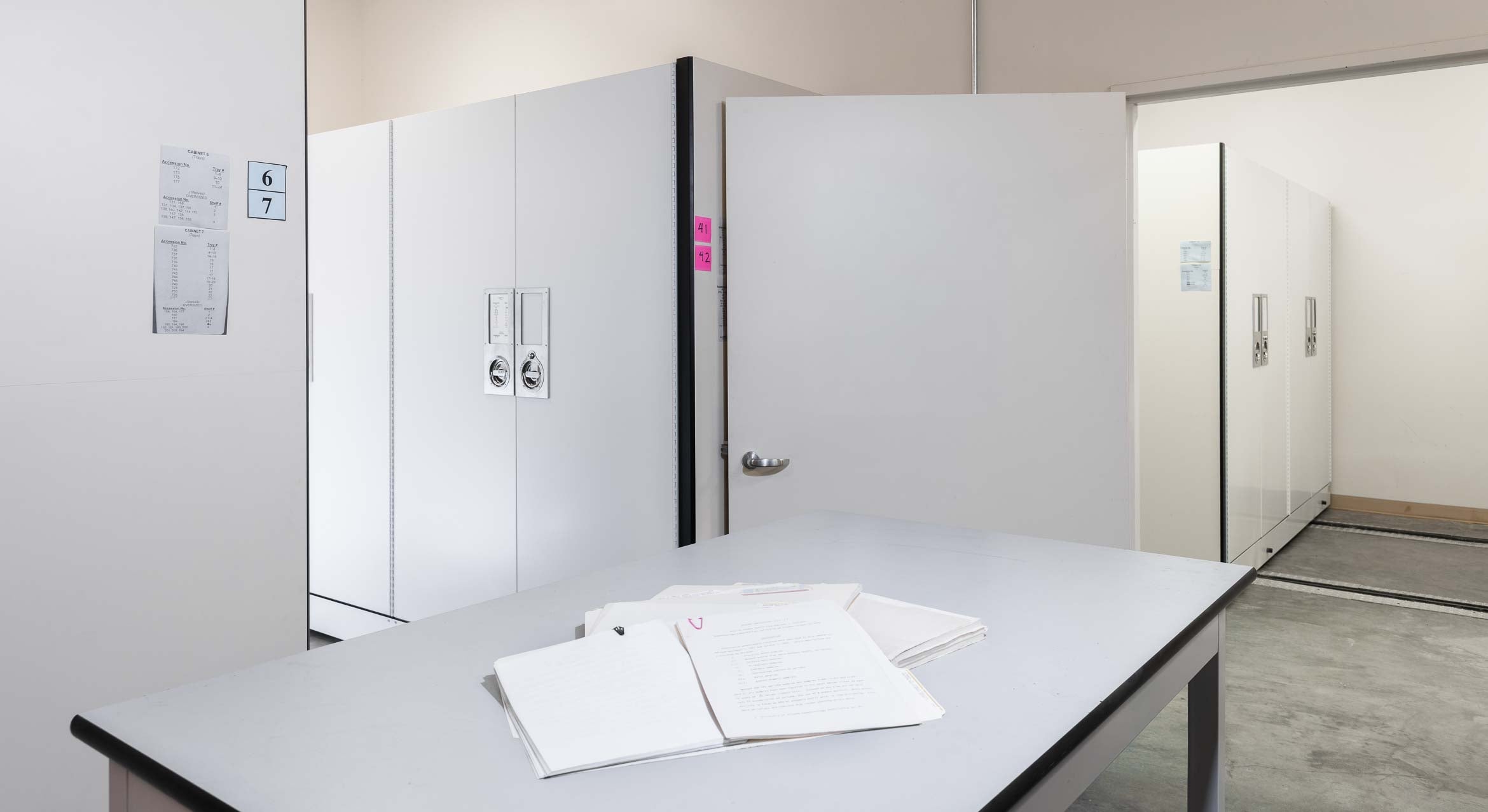
Strength in Numbers
Consider them each important parts of an essential whole: UC Santa Barbara’s multiple grants and collaborations focused on building the academic pipeline of students of color — from high school to the professoriate — are key to the university’s status and success as a Hispanic-Serving Institution (HSI). And the campus has recently added another piece to this expanding puzzle.
UC Santa Barbara is among the 20 top-tier research institutions comprising the recently launched Alliance of Hispanic Serving Research Universities (HSRU). The member universities, which span nine states, all are designated HSIs. Its collective goals are to double the number of Hispanic doctoral students and increase by 20% the Hispanic professoriate in our universities by 2030.
“By working together as an alliance, we will build on our collective strengths as Hispanic serving research universities, including academic collaborations, creating research opportunities, joint outreach efforts, data exchange and sharing and more, in order to achieve our shared goals of advancing diversity, excellence and opportunity,” said Chancellor Henry T. Yang, who serves on the alliance’s executive committee.
UC Santa Barbara was the first member of the Association of American Universities (AAU) — a prestigious group of tier one research universities (R-1) — to earn the HSI designation, which recognizes eligible institutions with an enrollment of undergraduate full-time equivalent students that is at least 25% Hispanic students. The first UC to achieve both AAU membership and HSI status, UCSB also is a designated Asian American and Native American Pacific Islander-Serving Institution, as well as a Minority Serving Institution.
“Through our membership in HSRU and other organizations, such as the Hispanic Association of Colleges and Universities, UC Santa Barbara is part of a rich ecosystem of interrelated HSIs committed to access and excellence,” said David Marshall, executive vice chancellor. “UCSB has long partnered with other HSIs; for example, the transfer pathway programs with our neighboring 2-year colleges, and the Cal-Bridge program that recruits Cal state students into our UC graduate programs. Our faculty members participate in many collaborative multi-campus research projects with other HSIs across the country. The HSRU alliance will enable us to build on the success of these activities and expand our ongoing efforts to recruit and retain diverse graduate students and faculty members.”
Dolores Inés Casillas, director of the Chicano Studies Institute at UCSB and a professor of Chicana/o studies, is the campus’s faculty liaison to the new alliance.
“We were designated an HSI because we reached that threshold of at least 25% undergraduate enrollment of Hispanic students. Once you have that, it allows you to think about the entire university — not just undergraduates — and to really transform how the university works,” she said. “UC Santa Barbara has been a trendsetter. We are a stronger R-1 institution because we are a minority-serving institution. You cannot offer a top-tiered educational and research experience without a diverse body of students, faculty and staff.”
The campus’s commitment to diversity, equity and inclusion is further reflected in a pair of new grants from the Andrew W. Mellon Foundation as part of its nationwide initiative, “Crossing Latinidades: Emerging Scholars and New Comparative Directions,” which involves 16 public research universities designated as Hispanic-serving institutions.
Casillas is the lead PI on one of them, “Latinx Sound Cultures: Belonging, Resonance, and Amplifications,” for which she will map the emergence of (Mexican) Indigenous-speaking radio stations on California’s central coast. Bringing together Chicana and Latina scholars whose research examines sound as a medium for the creative formation of political subjects in contemporary media, the project also has investigators from University of Illinois at Chicago and Queens College CUNY.
“We are each focusing on research that crosses our own Latinx origin group, but the idea was that you link up with two other scholars at two other universities and come up with a collaborative project,” Casillas explained. “In that way it honors the fact that everybody has their own strength in their own community but can learn from people based in another place. It’s really unique.”
UCSB’s Micaela J. Díaz-Sánchez, an assistant professor of Chicana/o studies, is leading “The AfroChicanx Digital Humanities Project: Memories, Narratives, and Oppositional Consciousness of Black Diasporas,” with collaborators at University of Arizona and University of New Mexico, to create a digital humanities archive meant to illuminate the multifaceted experiences and histories of Afro communities in Mexico and the U.S.
The grants come on top of the campus’s many ongoing initiatives in this realm, including ONDAS (Opening New Doors to Accelerating Success), an academic resource center for first-gen students, and the ÉXITO program, in which students earn bachelor’s degrees in ethnic studies or feminist studies, then earn master’s degrees and teaching credentials at UCSB’s Gevirtz Graduate School of Education. Another program, FUERTE, aims to increase diversity and inclusion in conservation and environmental science by offering both research and field work experience to Latinx undergrads.
As part of the California Alliance for Hispanic-serving Social Science Advancement, UC Santa Barbara is collaborating with CSU and other UC campuses to align social science research initiatives with the Hispanic-serving mission of the majority of institutions of higher education in California. And its teaming with experts from University of Arizona to bolster pathways to STEM graduate education for Latinx students on an NSF-funded project of the Hispanic Association of Colleges and Universities.
In short, there’s a lot. As there should be, said Casillas. With six of nine undergraduate UC campuses designated HSIs — and California’s K-12 system now 50% Latinx — she noted, the entire University of California in the near future will become an HSI system.
“The pipeline and the college experience has changed, and I think an HSI designation reminds us of that,” Casillas said. It used to be you’d go to high school, then a 4-year school, then maybe something else. Nowadays it’s high school, then a community college, then you might have to commute. The entire college-going experience has changed. Doing things in coalitions or alliances helps us remind each other and strategize how that experience has changed and how we then need to change, how our university structure needs to change to accommodate these populations.
“That’s when our commitment to first-gen students really shines,” she added. “It’s not ‘How much are we going to help them when they arrive here,’ but ‘How much are we going to change to make sure that they thrive here.’”



